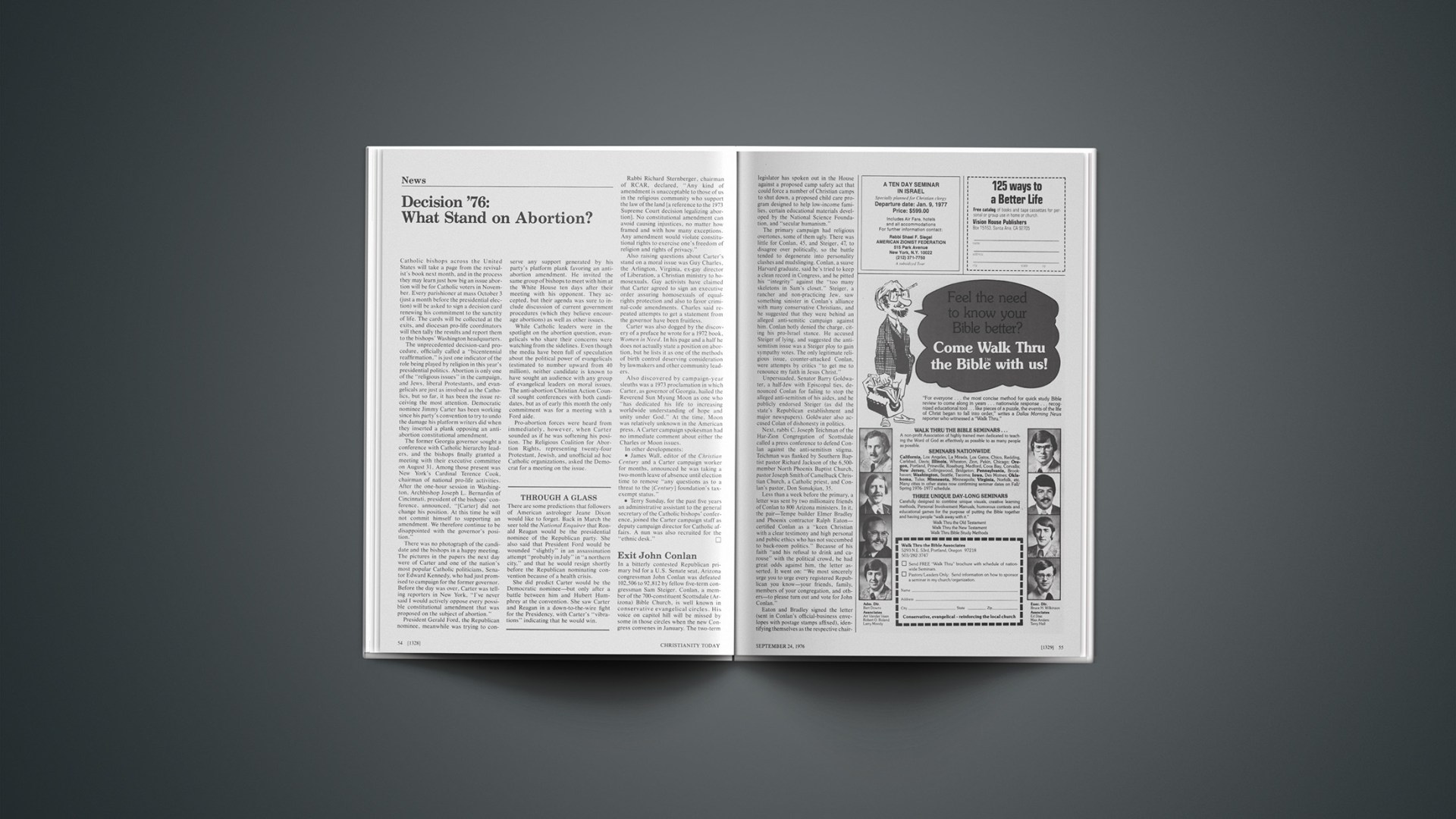Reports have been leaking out about an archaeological discovery that some scholars think is the most important yet. Whether it will prove to be greater than the Dead Sea Scrolls or the Deluge Tablet or any of a number of other discoveries that have greatly affected the study of the Bible remains to be seen. That it will eclipse the discoveries of Heinrich Schliemann, which revolutionized the study of antiquity, seems quite unlikely, but we would do well to keep an open mind.
The new discoveries, which have been coming to light since 1974, are the results of the work of Italian and Syrian archaeologists at Tell Mardikh in northwest Syria, the site of ancient Ebla. The principal archaeologist is Dr. Pado Matthiae of the University of Rome. Because of the complexities of joint publication in the two countries involved in the excavation, no texts have yet appeared in print, and only spotty information has been released.
A large number of tablets have been found, reportedly 15,000 so far, and there is promise of opening the official archives in the next season of excavation. These tablets are dated around the First Dynasty of Akkad (roughly 2300 B.C.), or two to five centuries prior to the time of Abraham. They are written in cuneiform and belong to a language group that may prove to be Northwest Semitic. The significance of this may not be apparent to anyone not working in Semitic studies, so let me try to explain it.
So far, our early written discoveries from the ancient Near East are cuneiform documents in Old Akkadian and Sumerian (unrelated languages) and hieroglyphic inscriptions in Egyptian. These already known materials are, geographically speaking, from the borders of the biblical world. And in linguistic relationship, they are quite remote from biblical Hebrew and Aramaic. The earliest materials we have that are more closely related to the biblical world are Ugaritic tablets from Ras Shamra, dating from around the fifteenth century B.C. However, Ugaritic is written in alphabetic cuneiform, which provides us with the consonants only. Biblical Hebrew was written with the consonants only, and the vowels were added by the Masoretes sometime between the sixth and tenth centuries A.D. We therefore have very little certain evidence of how Hebrew was vocalized in the time of the prophets. Hebrew is quite closely related to Ugaritic in its consonants, and its relation to the Assyrian and Babylonian dialects of Akkadian is more remote but still well established.
The new discoveries, dating from the end of the third millennium B.C., are written in syllabic cuneiform, which provides the vowels as well as the consonants. Sumerian logograms (signs that represent words) are explained in “Eblaic” syllobograms (signs that represent syllables in the newly discovered language), which will provide an important bilingual dictionary for many words. If the language indeed proves to be Northwest Semitic, it will be closely related to Aramaic and Ugaritic and reasonably close to Hebrew—but it will antedate by hundreds of years all remains that we have of these languages. The impetus that this will give to Semitic studies goes beyond our imagination.
A king of Ebla was Ibrum (cf. Eber in Genesis 10:24), who was contemporary with Sargon of Akkad. He seems to have controlled much or all of Palestine, Syria, Sumer, and Akkad, and to have had trade relations with the land of Hattu (Hittites) and Elam. Hundreds of place names are recorded, including Urusalima (Jerusalem), and many personal names, including ab-ra-mu (Abram), is-ra-ilu (Israel), e-sa-um (Esau?) sa-u-lum (Saul), da-udum (David?), and mi-ka-ilu (Michael), as well as mi-ka-ya (Micah). Since –ilu seems to be the word for “god” and it is paralleled by –ya in the two forms, the conclusion that the divine name Yah (or Yahu or Yahweh) was already known is most tempting. If this is established, then the view that the divine name Yahweh was not known until the revelation to Moses in Midian will have to be reconsidered. The name Yahweh is found in Genesis, prior to the time of Moses, but this has often been explained away in the light of Exodus 6:3.
Reportedly, several articles on the Tell Mardikh discoveries are in the process of publication, and we are assured that the text and translation of several tablets will soon be made available. Since the discovery includes economic texts, legal documents (hence the earliest law code), mythological texts, treaties, and probably other literary genres, many scholars eagerly await the publication.
We know that there were various peoples in the region of Syria and Palestine prior to the arrival of Abraham and the Patriarchs, and that these peoples played a significant part in molding the events recorded in the Bible. No longer is it possible to think of Abraham as the creation of post-exilic writers. The Tell Mardikh discoveries, to be sure, do not “prove the Bible.” Nor can any archaeological discovery. The only way to prove the Bible is to take it on faith and apply it in life. It will prove itself to be true. But Tell Mardikh will probably throw a great amount of light on some of the background of the book of Genesis and the events it records.










